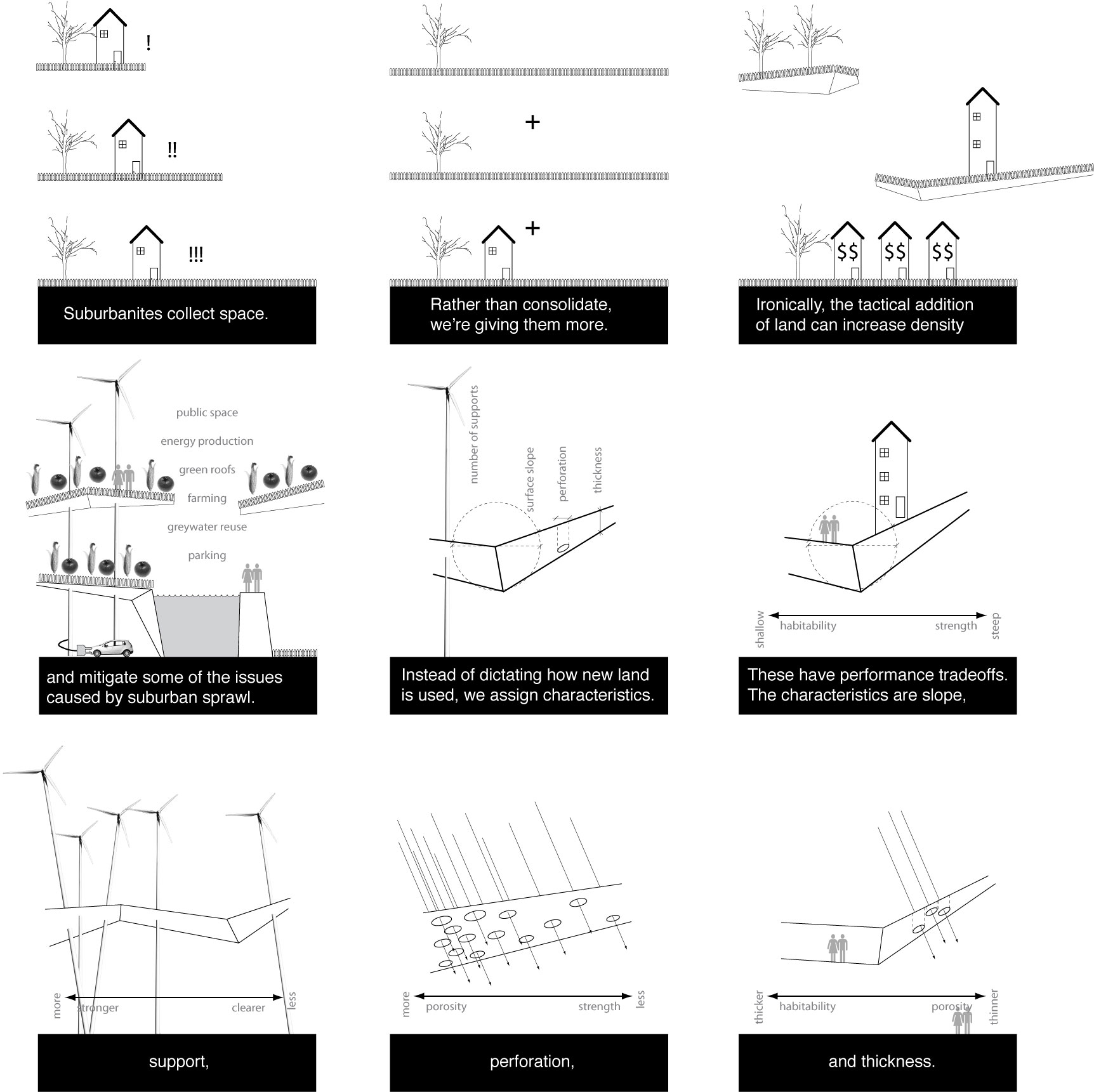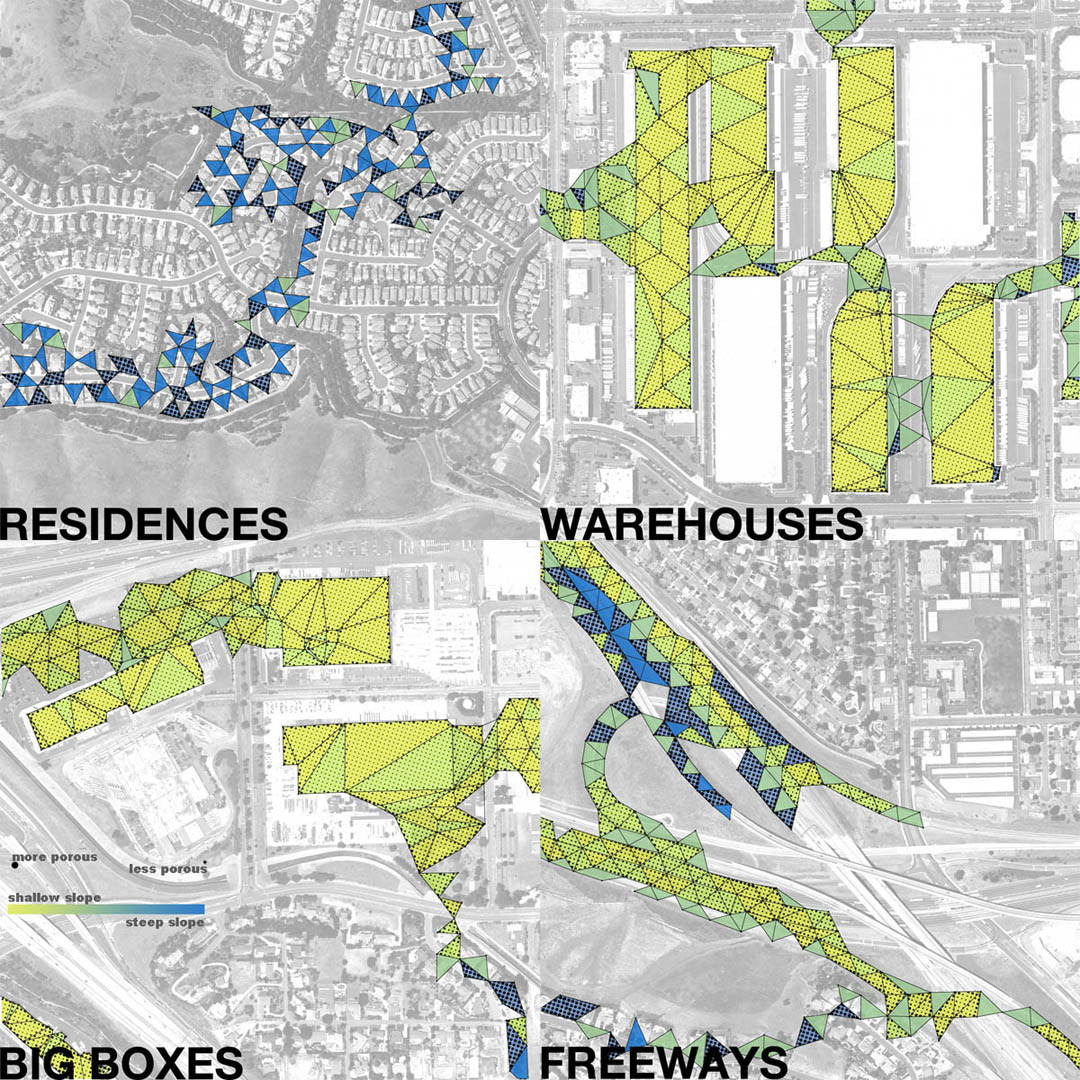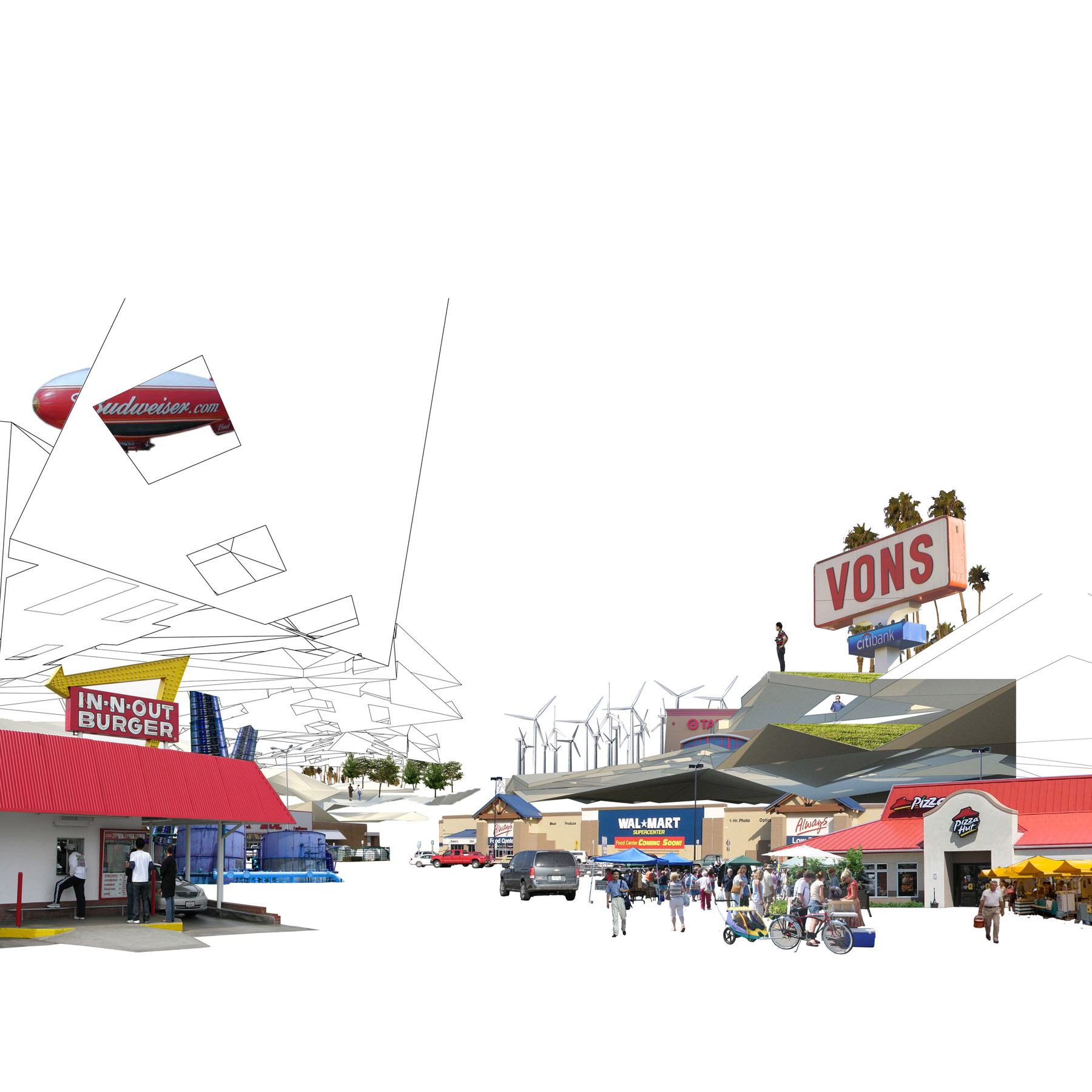Here is a little something Rob and I put together for the Re-burbia competition. Our entry asks the questions: What if the challenge suburbs face is not that they over-consume land, but have too little? How could an infusion of new land simultaneously (and paradoxically) mitigate some of the issues caused by the under-utilization of existing land? We didn’t win; bummer.





People love living in suburbs. Urbanites often imagine them to be sterile cultural wastelands, but the suburbs host vibrant and diverse communities. While not everyone who dwells in a suburb does so out of love, many do.
Yet there are serious problems with the suburbs. They are energy inefficient, lack public space, and are often hostile to pedestrians. The root of these problems is that suburbs use too much land. The typically suggested solution to this problem remodels the suburbs after the city: building more buildings on smaller lots.
But if we want to imagine a suburban future that solves the many issues created by problematic land-use patterns, we ought to envision one that appeals to dwellers who love the suburbs.
The amount of land offered to each inhabitant is also one of the most cherished characteristics of suburbs. Rather than force suburbanites to use less land, why not make more land in the suburbs?
This new land-surface can be programmed indirectly through the modification of its properties, such as slope, support, perforation, and thickness. These inform a range of possible uses for the surface without strictly defining them, leaving room for the surface to be appropriated according to cultural and market forces. Further, the surface becomes a point of agency for counteracting the above noted land-use issues. By making more land, we can add more of what people love about the suburbs while (ironically) ameliorating problems created by wasting land.


You should have been there. Most of the entries are pretty disappointing.
Thanks. I think the way we approached the issues the competition tries to engage is sound; if only our boards were as beautiful as these we might have had a chance…
http://bldgblog.blogspot.com/2009/08/future-pastoral.html
Yeah, right? Those are some fantastic, quiet images.
Unfortunately images make more of an “impact” with regards to voting that ever i think, especially in these kind of (short/quick digital popup) competitions.
Your “celebration” of the suburbs approach, is a nice critical change from the the burbs are totally wasteland mentality. Of course the very idea of re-burbia, would seem to me to imply, as much.
I was especially struck by your use of “perforation” (and it’s accompanying set of images), and wondered how this might differ from the concept of “urban acupuncture”. Perforation seem to me to suggest more of a spatially flattened/widened targeting as opposed to a more focused acupuncture?
Nam, I’ve never heard of / seen an articulated description of ‘urban acupuncture’, though it sounds exciting – does such a thing exist? Or was this promising phrase something that perforation brought to your mind?
“Perforation seem to me to suggest more of a spatially flattened/widened targeting as opposed to a more focused acupuncture”
I’d say that’s right. We understand perforation to be here applied fairly universally, with gradiated qualities. In my mind, acupuncture implies the opposite – the quality (or action) is pretty much the same everywhere it is applied, but the application is hyper-focused, local – not universal.
Perforation is first informed by phenomenal concerns – particularly the amount light and perceived shelter you are looking for in a specific place. But what I find more interesting are the implications (for structure, surface habitability, required thickness, etc) these decisions have; and the potential for these trade-offs to act as a primary driver of development. That’s why we hypothesized that such become the planning mechanism for the land, instead of a sort of mandated-use, zoned, master-planned scenario. We’re searching for a way to create indirectly-controlled landscapes which encourage creative appropriation.
Don’t blame the “wow factor” of your visuals for your exclusion, you lost because the clarity of your idea as expressed (both graphically and textually) is very poor. I was truly intrigued by the premise of your submission, but after re-reading this post and examining each image twice, I STILL can’t understand what you’re proposing here. My guess is that the judges couldn’t either.
Did someone blame our loss on the wow factor? I didn’t. If I sounded like I was lamenting that only the pretty girls get asked to dance, sorry. It wasn’t my intention. I think the clarity of the images posted by bldgblog which I referred to are a key component of their beauty. I don’t think that if our images were just more dramatic (I’m assuming this is what you mean by ‘wow factor’), folks would have paid more attention to our entry and bowed down before its brilliance. If things aren’t clear, thats on us, and something we’ll have to improve. Let’s not confuse that valid critique by inserting phrases no one used.
[…] Nam mentions in the comments on Stephen’s post, the re-burbia competition’s phrasing and framing seems to imply a […]
sbecker, exactly.
Also speaking of perforation did you see this?
http://archinect.com/news/article.php?id=91184_0_24_0_C
Although, there the concept is not being applied urbanistically, per se. But as a facade.
Here is some interesting followup commentary on Reburbia entries
http://news.beloblog.com/ProJo_Blogs/architecturehereandthere/2009/08/column-how-to-o.html